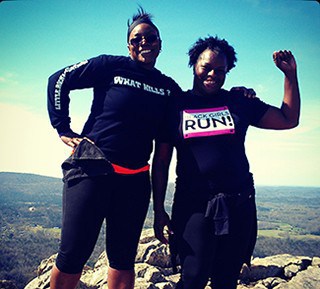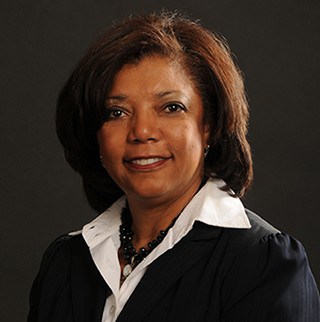Fibroids Procedure Doesn’t Slow Runner Down
Oct. 09, 2013 | An avid runner and Zumba teacher, Kanisha Caesar was the picture of perfect health. So when she began experiencing intense pain last spring, she knew something wasn’t right. Caesar was accustomed to experiencing some cramping at the beginning of her monthly cycle. But after almost six consecutive days of serious pain, she decided to visit an urgent care clinic. At the clinic, the doctor felt a mass where she was having pain. The clinic did not have the technology to do an X-ray on her, so they told her to go to an emergency room. Following an ultrasound, she was diagnosed with fibroids, given medication for her pain and told to follow up with her physician. Caesar, of Jacksonville, first went to a different local hospital that told her the best treatment option would be to have a hysterectomy. At age 35 and extremely active, that was not an option. Caesar had done her research and knew there was a laparoscopic procedure that would not require a hysterectomy. The physician didn’t have experience with this, so Caesar decided to seek out someone who did. At the advice of friends, she went to Nancy Andrews Collins, M.D., an associate professor in the UAMS Department of Obstetrics and Gynecology who referred Caesar to Gloria Richard-Davis, M.D., a professor and director of the Division on Reproductive Endocrinology and Infertility (REI) in the Department of Obstetrics and Gynecology of the UAMS College of Medicine. “I like to do research,” Caesar said. “In doing so on Dr. Richard-Davis, I was already impressed with her. I liked that she continues to further her medical education in the areas of research, treatment and removal of fibroids while preserving reproductive organs, especially among minority women.” Caesar had to have a sonohysterogram, which is a special saline-infused ultrasound, before the procedure so Richard-Davis could look at the lining of the uterus and better plan her surgery. Caesar had three fibroids; the largest one was the size of a grapefruit and another about the size of a tennis ball. Richard-Davis was able to do the myomectomy laparoscopically with the help of the DaVinci robot. She said Caesar’s fibroid was about the largest size that she would attempt to do laparoscopically. “I was begging for that procedure,” Caesar said. “I knew it would help me recover a lot quicker.” Fibroids are more common than most people realize, especially among African-American women. But with this approach, the goal is to get patients back on their feet and in their normal routines as soon as possible. “The DaVinci robot is a tremendous asset to what we can do when we treat fibroids minimally invasively,” Richard-Davis said. “The larger the procedure, the greater the risk, so it’s best when we can do the minimally invasive procedure, done through small incisions.” Caesar had very little pain from the Aug. 26 procedure, and was released from the hospital the next day. She worked from home, so she didn’t have to miss many days of work. “Every day that goes by, I can do more things,” she said. “I’ve started walking every day. At first I could tell I haven’t done anything physical in a while.” One of the first places she found herself walking was the mall. Not only did she find it a comfort to be able to walk around, but she also was able to wear a size smaller in clothes. Caesar expects to start running again in November and is already looking forward to getting back to Zumba, both a little quicker because of Richard-Davis. “I knew I found my doctor when I went to see her,” Caesar said. “She’s very good at the doctor-patient relationship and communicating everything to her patients. She will even draw a diagram if necessary. She was my best option, and I’m thankful for her.” |

